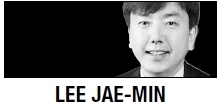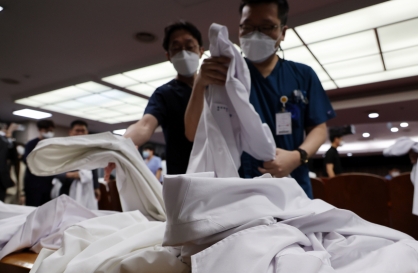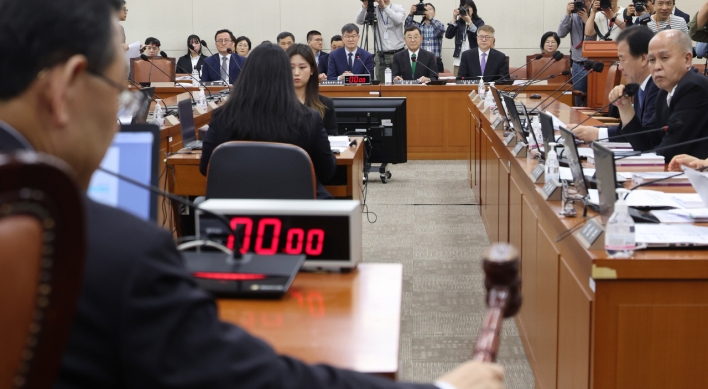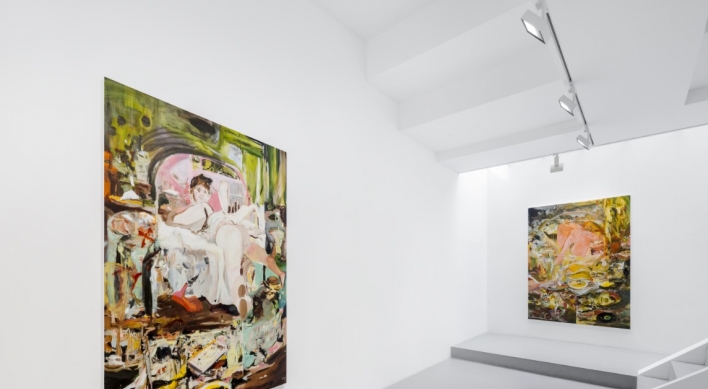 Two ancient Buddhist statues were stolen by a group of Korean smugglers from two Japanese temples on Tsushima Island in October 2012. The statues were later found in Korea and confiscated by law enforcement agencies. Japan has been asking for the return of the statues. This issue has remained an outstanding item in bilateral relations.
Two ancient Buddhist statues were stolen by a group of Korean smugglers from two Japanese temples on Tsushima Island in October 2012. The statues were later found in Korea and confiscated by law enforcement agencies. Japan has been asking for the return of the statues. This issue has remained an outstanding item in bilateral relations.There is an international treaty to which both countries are parties, the 1972 UNESCO Convention, which obligates return of stolen cultural artifacts. Japan has been claiming the return based on this convention.
One of the two statues was returned to Japan in July 2015 after the local law enforcement agency determined that no evidence existed to prove the bronze statue had been illegally brought to Japan.
The other is now being housed at a museum storage facility in Korea pending a court proceeding regarding the return of the religious artifact to Japan. This court proceeding was brought by those who claim the Buddhist statue should now remain in Korea as it was plundered by Japan in the first place.
Confirming what happened in 1362 (the presumed year of the statue’s relocation) is practically impossible. This is the year when England was under the reign of King Edward III and the English parliament and court started to use English instead of French. The Black Plague had just killed up to 50 million people in Europe. Goryeo Dynasty ruled Korea at that time. Not surprisingly, the Korean Cultural Heritage Administration opined the other day that it was impossible to confirm what caused the relocation of the statue from its original home of Buseoksa Temple in Seosan, Korea.
There is a possibility that the statue was transferred as a result of legitimate bilateral trade in the 14th century.
Furthermore, even if the original relocation is the outcome of plunder by another country, that alone does not mean that it provides legal permission for someone to pry open the treasure storage of that other country. Countries engage in lengthy negotiations and cooperation even in such situation.
In any event, in the absence of any concrete evidence, a reasonable conclusion should be to return this second statue to the temple in Japan as with the first one that was returned last year. While it is not clear what happened in 1362, it is clear, at least, what happened in 2012.
The law enforcement agencies concluded that this cultural artifact was stolen from the Japanese temple. A specific legal obligation is imposed on the parties to the UNESCO Convention to return all stolen artifacts. Korea is a party to this convention since 1983.
It is an unfortunate mistake to confuse this stolen artifact case with the larger endeavor for repatriation of cultural artifacts in foreign countries. Cultural property repatriation is indeed an issue the nation pays keen attention to, sometimes arousing heated emotional response from the people. It is true that cultural artifacts are considered to represent the formation of national identity.
It is also true that sometimes people are frustrated by the time or difficulty involved in bringing the lost Korean cultural artifacts back to Korea.
That said, forceful transfers and illegal smuggling should not be condoned. Defending an obvious crime with an unsubstantiated claim from 650 years ago would only put Korea in an awkward situation in its otherwise legitimate attempt to bring back Korean cultural artifacts from overseas.
It is feared that foreign observers might view Korea as failing to abide by a specific obligation mandated by a treaty.
By Lee Jae-min
Lee Jae-min is a professor of law at Seoul National University. — Ed.






![[Grace Kao] Hybe vs. Ador: Inspiration, imitation and plagiarism](http://res.heraldm.com/phpwas/restmb_idxmake.php?idx=644&simg=/content/image/2024/04/28/20240428050220_0.jpg&u=)
![[Herald Interview] Mom’s Touch seeks to replicate success in Japan](http://res.heraldm.com/phpwas/restmb_idxmake.php?idx=644&simg=/content/image/2024/04/29/20240429050568_0.jpg&u=)


![[News Focus] Lee tells Yoon that he has governed without political dialogue](http://res.heraldm.com/phpwas/restmb_idxmake.php?idx=644&simg=/content/image/2024/04/29/20240429050696_0.jpg&u=20240429210658)








![[Today’s K-pop] Seventeen sets sales record with best-of album](http://res.heraldm.com/phpwas/restmb_idxmake.php?idx=642&simg=/content/image/2024/04/30/20240430050818_0.jpg&u=)